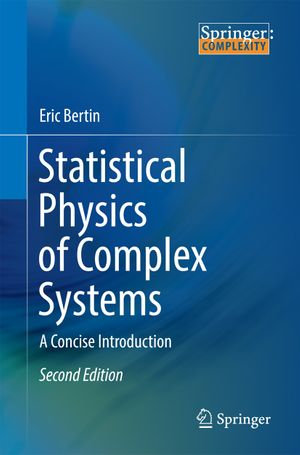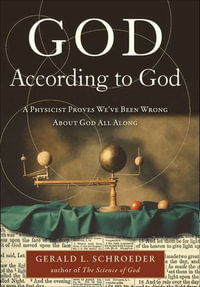
Statistical Physics of Complex Systems
A Concise Introduction
By: Eric Bertin
eText | 14 October 2016 | Edition Number 2
At a Glance
eText
$89.00
Instant online reading in your Booktopia eTextbook Library *
Read online on
Not downloadable to your eReader or an app
Why choose an eTextbook?
Instant Access *
Purchase and read your book immediately
Read Aloud
Listen and follow along as Bookshelf reads to you
Study Tools
Built-in study tools like highlights and more
* eTextbooks are not downloadable to your eReader or an app and can be accessed via web browsers only. You must be connected to the internet and have no technical issues with your device or browser that could prevent the eTextbook from operating.
This course-tested primer provides graduate students and non-specialists with a basic understanding of the concepts and methods of statistical physics and demonstrates their wide range of applications to interdisciplinary topics in the field of complex system sciences, including selected aspects of theoretical modeling in biology and the social sciences.
Generally speaking, the goals of statistical physics may be summarized as follows: on the one hand to study systems composed of a large number of interacting units, and on the other to predict the macroscopic, collective behavior of the system considered from the perspective of the microscopic laws governing the dynamics of the individual entities. These two goals are essentially also shared by what is now called 'complex systems science,' and as such, systems studied in the framework of statistical physics may be considered to be among the simplest examples of complex systems - while also offering a rather well developed mathematical treatment.
The second edition has been significantly revised and expanded, featuring in particular three new chapters addressing non-conserved particles, evolutionary population dynamics, networks, properties of both individual and coupled simple dynamical systems, and convergence theorems, as well as short appendices that offer helpful hints on how to perform simple stochastic simulations in practice.
Yet, the original spirit of the book - to remain accessible to a broad, non-specialized readership - has been kept throughout: the format is a set of concise, modular and self-contained topical chapters, avoiding technicalities and jargon as much as possible, and complemented by a wealth of worked-out examples, so as to make this work useful as a self-study text or as textbook for short courses.
From the reviews of the first edition:
"... a good introduction to basic concepts of statistical physics and complex systems for students and researchers with an interest in complex systems in other fields ... ." Georg Hebermehl, Zentralblatt MATH, Vol. 1237, 2012
"... this short text remains very refreshing for the mathematician." Dimitri Petritis, Mathematical Reviews, Issue 2012k
Read online on
ISBN: 9783319423401
ISBN-10: 3319423401
Published: 14th October 2016
Format: ePUB
Language: English
Publisher: Springer Nature
Edition Number: 2
You Can Find This eBook In
This product is categorised by
- Non-FictionSciencePhysicsStatistical Physics
- Non-FictionEngineering & TechnologyTechnology in GeneralEngineering in General
- Non-FictionMathematicsApplied Mathematics
- Non-FictionReference, Information & Interdisciplinary SubjectsResearch & InformationInformation theoryCybernetics & Systems Theory
- Non-FictionLibrary & Info SciencesLibrary & Information Services
- Non-FictionEngineering & TechnologyTechnology in GeneralMaths for Engineers
- Non-FictionSciencePhysicsMathematical Physics























